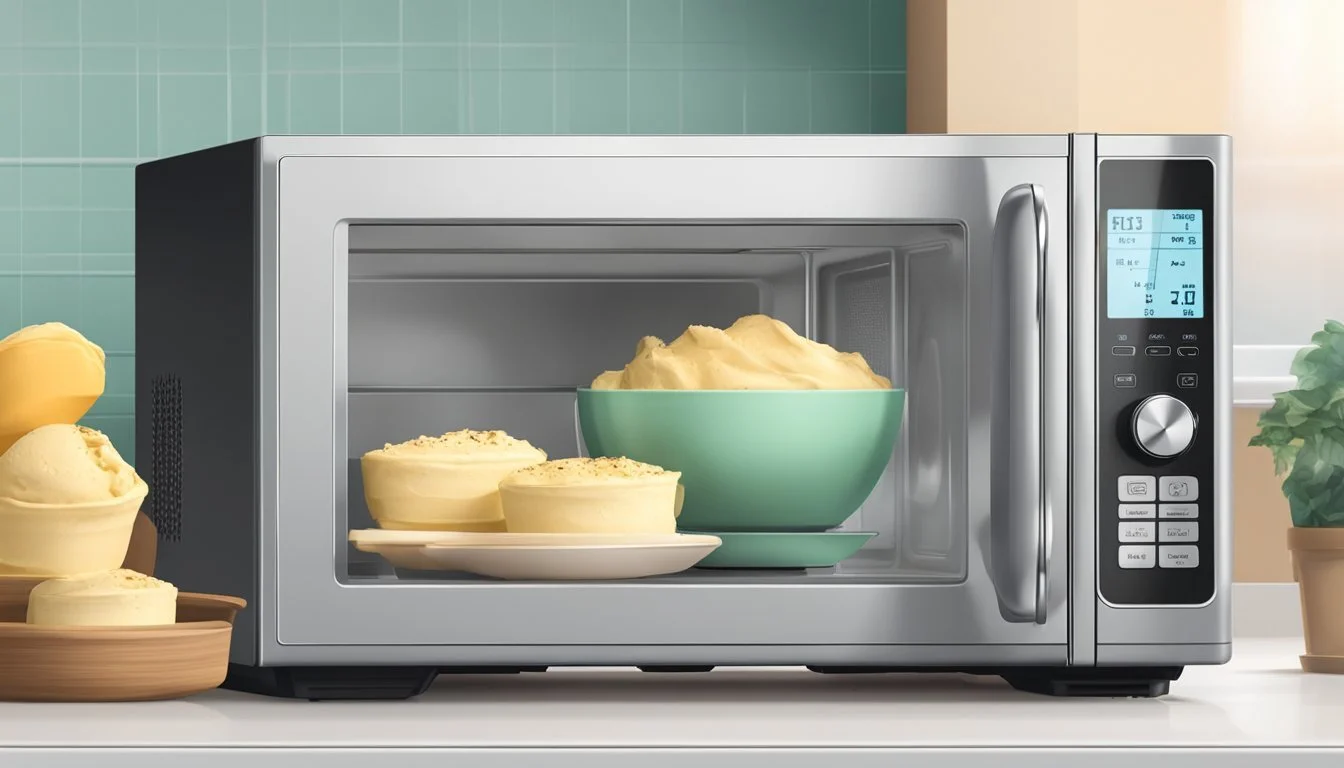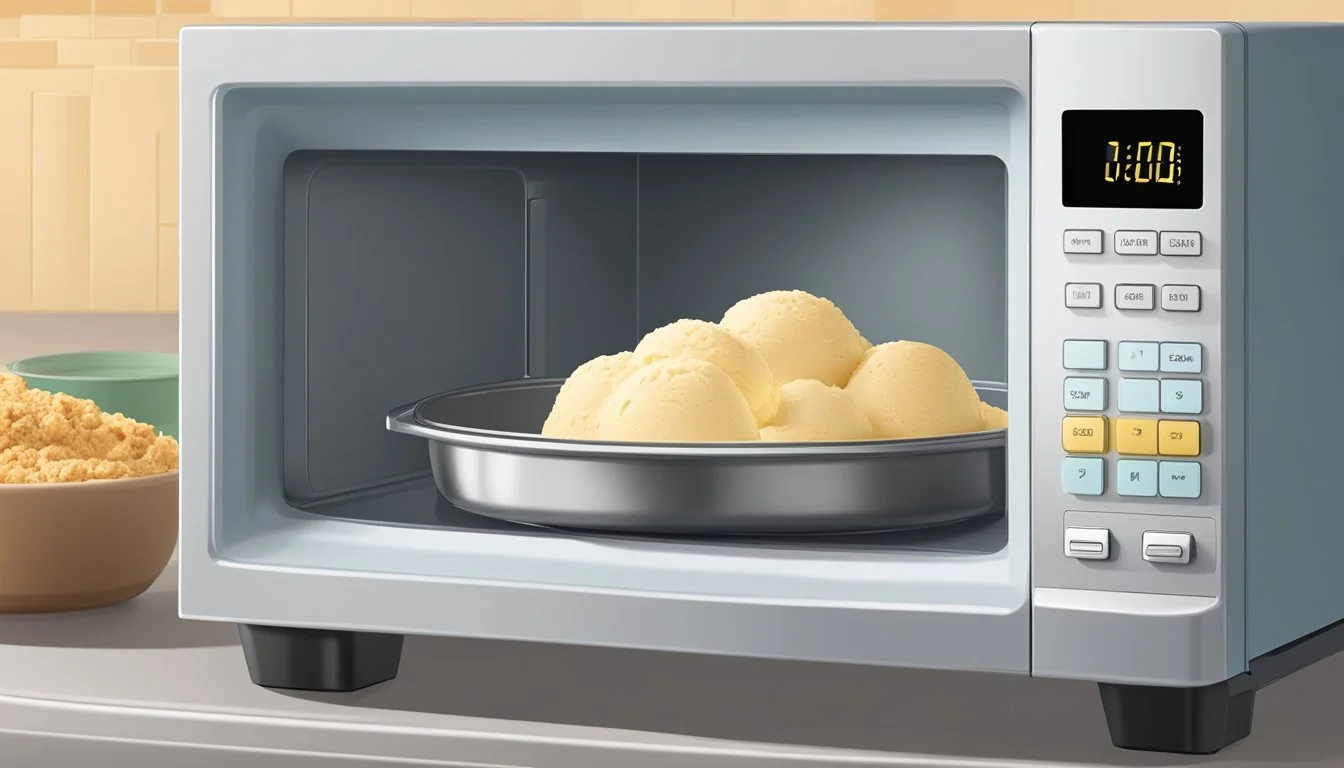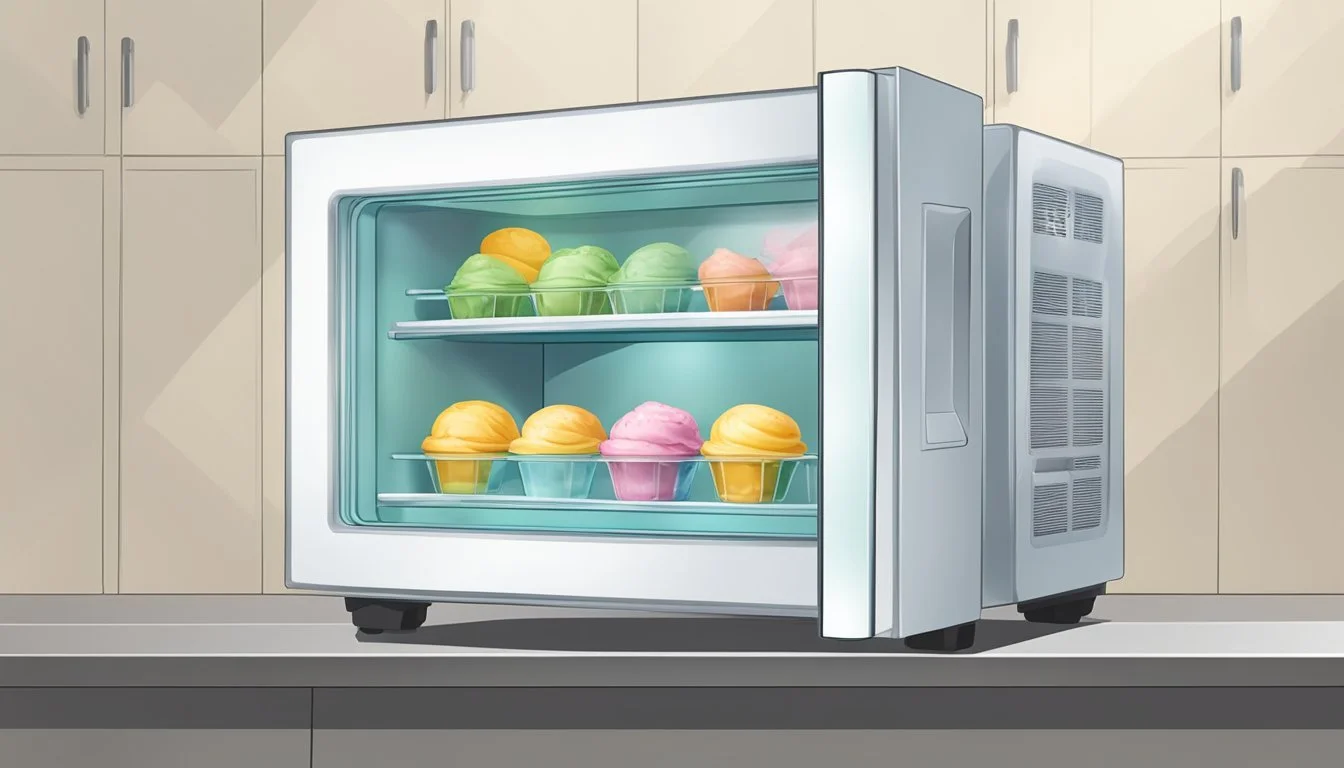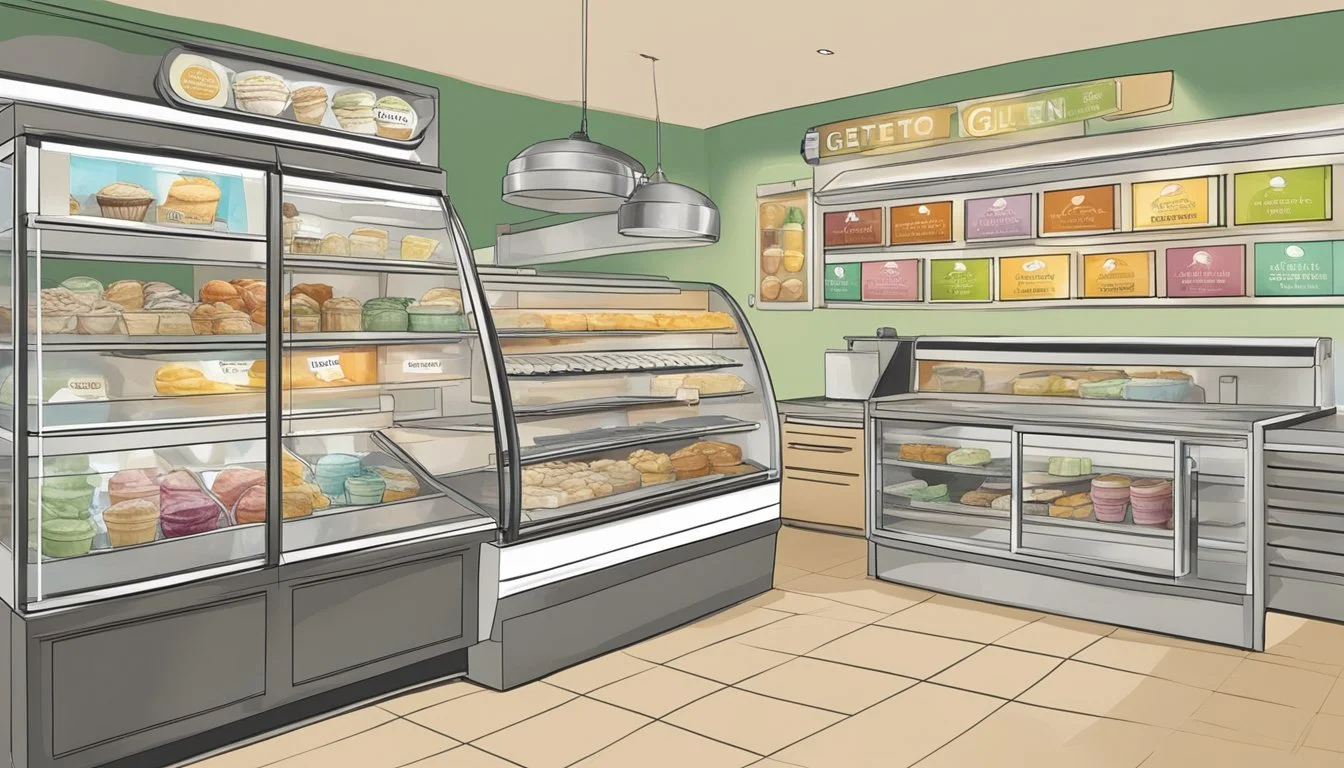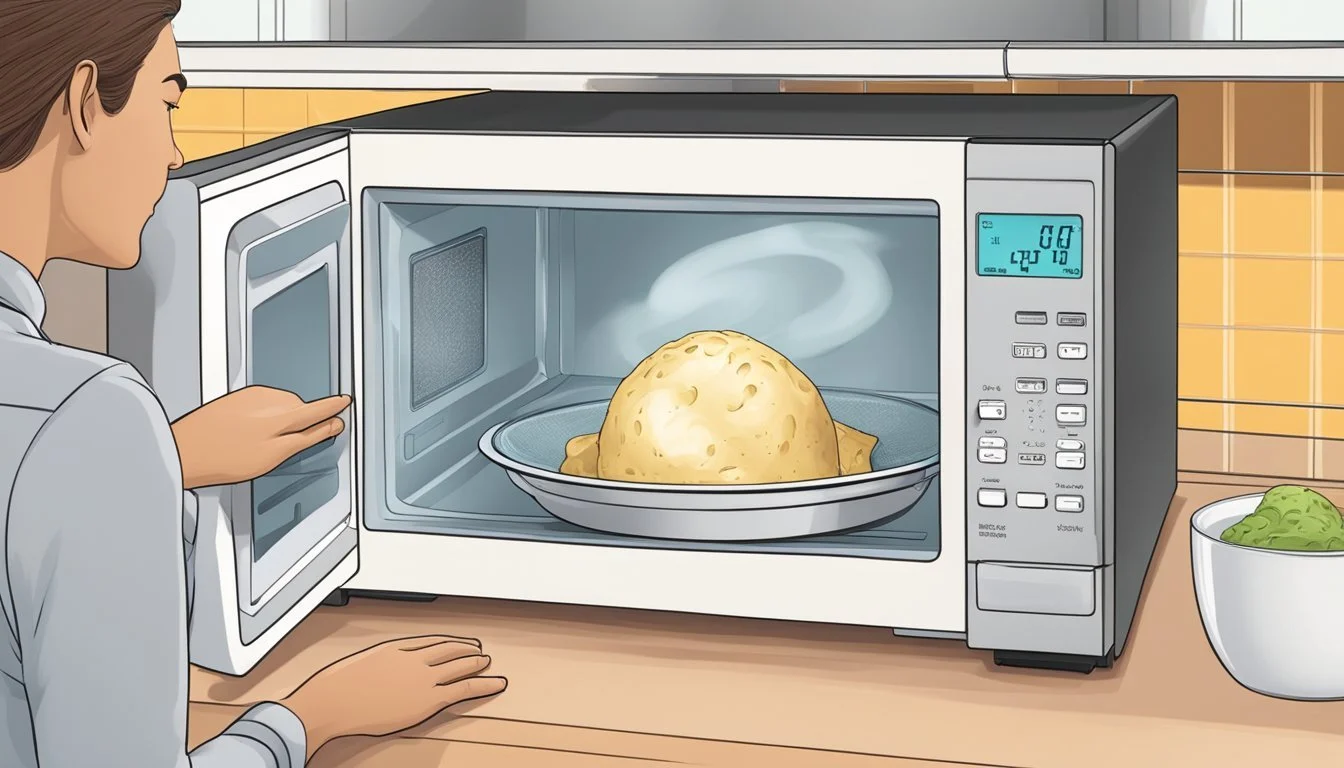How to Reheat Gluten-Free Gelato for Perfect Texture Every Time
Reheating gluten-free gelato requires careful consideration, especially for those with celiac disease or gluten sensitivity. Unlike traditional desserts, gelato's delicate texture can be easily altered if not handled properly. To reheat gluten-free gelato without compromising its creamy consistency, it’s essential to use gentle methods such as a low-temperature oven or allowing it to thaw gradually at room temperature.
The inherent challenge lies in maintaining the gelato's smoothness, which can be disrupted by rapid temperature changes. This is particularly important for gluten-free gelato, where ingredients like coconut milk or nut-based components could separate if overheated. Ensuring a gradual temperature increase can prevent these issues, delivering a more enjoyable experience.
For those careful about cross-contamination, choosing a gluten-free gelateria or making gelato at home guarantees that the dessert remains safe. Always verify that the ingredients and utensils used are free from gluten, thereby minimizing any health risks for individuals with gluten sensitivity or celiac disease.
Understanding Gluten-Free Gelato
Understanding gluten-free gelato involves recognizing the ingredients used, ensuring they are gluten-free, and being aware of potential cross-contamination issues that could affect those with gluten sensitivity or celiac disease.
Defining Gluten-Free
Gluten-free products do not contain wheat, barley, rye, or any hybrid derived from these grains. For individuals with gluten sensitivity or celiac disease, consuming gluten can cause adverse health effects.
Gluten-free gelato must therefore avoid any ingredients derived from gluten-containing grains. This includes being cautious about thickeners, stabilizers, and flavorings that might include gluten.
Composition of Gelato
Gelato is a traditional Italian frozen dessert known for its rich, creamy texture and full-bodied flavors. The primary ingredients typically include milk, cream, sugar, and various flavorings derived from fruits, nuts, or chocolate.
Unlike regular ice cream, gelato contains less fat and less air, giving it a denser texture. When it comes to gluten-free gelato, the focus is on ensuring that none of these ingredients, particularly additives or flavorings, contain gluten.
Cross-Contamination Concerns
Cross-contamination is a significant concern for those requiring gluten-free diets. Even if the gelato ingredients are gluten-free, it can still become contaminated if prepared or served with utensils that have contacted gluten-containing products.
To avoid cross-contamination, it is advisable to consume gelato from dedicated gluten-free gelaterias where all products are guaranteed to be free of gluten. Alternatively, always ask the vendor about their cross-contamination prevention measures, such as using separate scoops and storage containers for gluten-free gelato.
Selecting Ingredients
When selecting ingredients for gluten-free gelato, it's essential to choose safe dairy alternatives, natural sweeteners, and avoid hidden sources of gluten.
Gluten-Free Milk and Cream Alternatives
Using gluten-free milk and cream is crucial. Traditional cow's milk and cream are generally safe, but there are alternatives for those with additional dietary restrictions. Coconut milk and almond milk provide excellent substitutes without compromising the creamy texture.
It's important to check labels to ensure there are no added gluten-containing stabilizers or emulsifiers.
Additionally, using organic options can reduce the risk of contamination. Opt for products explicitly labeled gluten-free for the best results.
Natural Flavorings and Sweeteners
Choose natural flavorings and sweeteners to enhance your gluten-free gelato. Fresh fruit, honey, and pure vanilla extract are excellent options. For chocolate flavors, use gluten-free cocoa powder. Nuts like almonds, hazelnuts, and pistachios can add texture and taste but must also be verified as gluten-free.
When selecting sugar, both granulated and brown sugar are typically gluten-free, but always read labels for possible cross-contamination. Avoid artificial additives, as they may contain gluten or change the dessert's taste.
Avoiding Hidden Gluten
Hidden gluten can be found in many ingredients, including thickeners, stabilizers, and certain flavor enhancers. Always read ingredient lists carefully, even on products labeled gluten-free. Be cautious with pre-packaged flavorings and mix-ins, such as cookie pieces or wafer bits.
Ensure that any added components, like honey or nuts, are processed in a gluten-free environment to prevent cross-contamination. If in doubt about an ingredient's gluten-free status, it's safer to opt for a known safe alternative.
Lastly, using gluten-free certified products helps maintain the integrity of your gluten-free gelato.
Reheating Basics
For enjoying gluten-free gelato at its best, it’s crucial to understand the key differences between gelato and ice cream, and the ideal serving temperature for optimal texture and flavor.
Gelato vs. Ice Cream
Gelato and ice cream might seem similar, but they differ significantly in ingredients and preparation. Gelato uses more milk and less cream, which leads to a lower fat content. This affects the texture, making it denser and silkier compared to ice cream, which contains more air due to churning.
Additionally, gelato is served at a slightly higher temperature than ice cream to enhance its creamy texture and rich flavor profile.
The Ideal Serving Temperature
Temperature matters greatly for gelato. Unlike ice cream, which is typically served at a colder temperature, gelato should be enjoyed at 10-15°F higher. Serving it too cold can make it too hard, detracting from the intended creamy texture.
Reheat gelato by allowing it to sit at room temperature for a few minutes. This brief period helps soften it to the ideal consistency while preserving its rich flavor.
Reheating Techniques
For gluten-free gelato, achieving the perfect texture and flavor is key. Follow these specific techniques to ensure your gelato maintains its creamy, delicious consistency while reheating.
Countertop Thawing
One effective technique involves letting the gelato sit at room temperature for a brief period. This helps to soften the dessert without compromising its texture. Remove the gelato from the freezer and place it on the counter.
Allow it to sit for about 10-15 minutes. This method ensures the gelato won’t become overly soft or melt too quickly, maintaining a smooth, creamy texture suitable for serving. Avoid exceeding this time frame to prevent melting and loss of structure. This method is ideal for those who want to serve gelato promptly without using appliances.
Using the Refrigerator
Refrigeration provides a controlled thawing environment, preserving gelato’s quality. Transfer the container of gelato from the freezer to the refrigerator. Allow it to sit for approximately 30 minutes to 1 hour.
This slower thawing process ensures that the gelato reaches an optimal serving temperature gradually, minimizing the risk of ice crystals. By using the refrigerator, the gelato maintains its rich and creamy texture, making it ready to serve with the right consistency. This method is best for planned servings where time allows for a measured thawing process.
Serving Gluten-Free Gelato
Properly serving gluten-free gelato involves using the right serveware and choosing suitable toppings. Paying attention to these details enhances both safety and enjoyment for those with gluten sensitivities.
Appropriate Serveware
Using gluten-free serveware like dedicated gluten-free cones or cups is essential. Scoop the gelato with a clean, dedicated scoop to avoid cross-contamination.
Opt for individual serveware to maintain hygiene and avoid sharing utensils with other gluten-containing products. Gelaterias that specialize in gluten-free options usually have stringent protocols in place to ensure the safety of their offerings.
Accompaniments and Toppings
When it comes to toppings, it's crucial to select gluten-free options. Common choices include fresh fruit such as strawberries and blueberries, chocolate chips, and nuts like almonds and hazelnuts.
Always ensure toppings come from a verified gluten-free source to avoid any contamination. Avoid toppings like cookies or crumbs that often contain gluten, even if they're labeled as gluten-free, as cross-contamination can still occur.
By focusing on safe serveware and topping choices, you can enjoy gluten-free gelato without worries.
Homemade Gluten-Free Gelato Recipes
Creating gluten-free gelato at home can be both rewarding and delicious. Using simple ingredients, you can craft various flavors to suit tastes while ensuring they are safe for those with gluten sensitivities.
Simple Vanilla Gelato
To start, gather 2 cups of coconut milk, 1/2 cup of sugar, 1 vanilla bean, and 1 tablespoon of cornstarch. Begin by placing the coconut milk, sugar, and vanilla bean in a medium pot.
Heat on medium until the mixture starts to steam, whisking constantly until the sugar dissolves. Mix in the cornstarch and continue to whisk until the gelato base thickens slightly. Remove from heat and let cool completely before refrigerating for a few hours. Once the mixture is cold, churn it in an ice cream maker according to the manufacturer's instructions for smooth, creamy vanilla gelato.
Rich Chocolate Gelato
For this rich option, you'll need 1 cup of canned coconut milk, 1/2 cup of unsweetened cocoa powder, 1/2 cup of unrefined sugar, 1/4 teaspoon of salt, and 1 tablespoon of arrowroot. Reserve one cup of coconut milk and set aside.
In a heavy-bottomed saucepan, mix the remaining coconut milk, sugar, and cocoa powder. Bring the mixture to a simmer over medium heat, whisking frequently. In a separate bowl, combine the reserved coconut milk with the arrowroot and salt. Add this blend to the simmering mixture, and continue to cook until it thickens slightly. Cool completely, then refrigerate for several hours. Churn in an ice cream maker until it reaches a silky texture.
Refreshing Fruit Flavors
For a fruity gelato, fresh ingredients like strawberries or lemons are ideal. To make strawberry gelato, gather 2 cups of fresh strawberries (hulled and halved), 1/2 cup of sugar, and 1 cup of coconut milk. Blend the strawberries and sugar until smooth.
In a saucepan, heat the coconut milk until it begins to steam. Pour the strawberry puree into the warm coconut milk and stir well. Cook on medium until the mixture thickens slightly. Cool completely and refrigerate. For lemon gelato, substitute strawberries with fresh lemon juice and include the zest of one lemon while following the same process. Churn the cooled mixture in an ice cream maker for a refreshing end product.
Storing Gluten-Free Gelato
Effective storage of gluten-free gelato ensures it retains optimal taste and texture. Using suitable containers and maintaining proper freezer practices are vital.
Proper Storage Containers
Choosing the right containers is essential. Air-tight containers are the best option to prevent freezer burn and absorption of other odors.
BPA-free plastic or stainless steel containers with a tight-fitting lid are ideal. Ensure the container size matches the amount of gelato to minimize air space and reduce crystallization.
Labeling and dating the container can help in tracking freshness. Silicone lids provide a better seal and flexibility, enhancing storage efficiency.
Freezer Tips
Maintaining a consistent temperature is crucial. Set your freezer to 0°F (-18°C) to keep the gelato at the appropriate consistency.
Avoid placing the gelato near the freezer door where temperature fluctuations are frequent. Store it deeper within the freezer to ensure a stable environment.
Allow freshly made gelato to cool to room temperature before freezing to prevent ice crystal formation.
For best results, keep the gelato container upright and covered tightly.
Gluten-Free Brands and Gelaterias
When selecting gluten-free gelato, it's essential to know which brands and gelaterias offer gluten-free options without the risk of cross-contamination. Here are some commercial gluten-free brands and tips for finding gelaterias that cater to gluten-sensitive customers.
Commercial Gluten-Free Options
Several well-known brands offer gluten-free gelato varieties. Grom, an Italian brand, is renowned for using natural, high-quality ingredients and ensuring their products are gluten-free. Talenti is another popular choice, famous for its gelato and sorbet pints clearly labeled gluten-free.
Venchi offers various gluten-free flavors such as Vanilla, Chocolate, and Fruity options, made from pure ingredients like vanilla beans and cocoa. Always look for labels indicating gluten-free status to ensure safe consumption. Additionally, check ingredient lists and allergen information to avoid any potential cross-contamination.
Finding Gelaterias with Gluten-Free Choices
To find gelaterias with gluten-free options, consider using resources like Find Me Gluten-Free, a tool that helps locate gluten-free eateries. Opt for gelaterias that explicitly state they are gluten-free facilities, meaning no gluten is used in any flavors or cones. This eliminates the risk of cross-contamination.
Calling ahead can provide peace of mind. Ask if they use separate utensils and storage for gluten-free gelato. In Italy, some gelaterias like San Crispino have well-known gluten-free offerings, including flavors like pistachio and nocciola. Always verify practices and ingredient safety to ensure a worry-free experience.
Health Considerations
When reheating gluten-free gelato, understanding the associated health considerations is crucial. It’s important to be mindful of gluten-related health issues and explore lactose and dairy-free alternatives.
Gluten-Related Health Issues
For individuals with celiac disease or gluten sensitivity, consuming gluten can trigger adverse reactions such as abdominal pain, bloating, and diarrhea. Ensuring gelato is gluten-free is a critical step in preventing these symptoms.
Some gelato flavors may contain gluten due to mix-ins or flavorings. Cross-contamination poses another risk, especially in gelaterias where gluten-containing and gluten-free products share the same equipment. To mitigate these risks, it is essential to verify that the gelato is specifically labeled gluten-free.
In some cases, patrons may seek out dedicated gluten-free gelaterias. These establishments ensure that all ingredients and equipment are free from gluten, providing a safe option for those with severe gluten allergies or celiac disease. Calling ahead or inquiring about the practices of the facility can provide peace of mind.
Lactose and Dairy-Free Alternatives
Many traditional gelato recipes contain dairy, which can be problematic for those with lactose intolerance or a dairy allergy. Symptoms of lactose intolerance include bloating, gas, and stomach cramps, which can be avoided by opting for lactose-free gelato options.
To cater to various dietary restrictions, some gelaterias offer lactose-free and dairy-free alternatives. These options often use plant-based milks, such as almond, coconut, or soy milk, making them suitable for vegan and lactose-intolerant customers.
Ingredients like fruit puree, water, and sugar can also create delicious and refreshing dairy-free gelato flavors. It's important to verify that these alternatives are clearly labeled and to ask about the potential for cross-contamination if you have severe allergies. By doing so, you can enjoy gelato without compromising your dietary needs.



